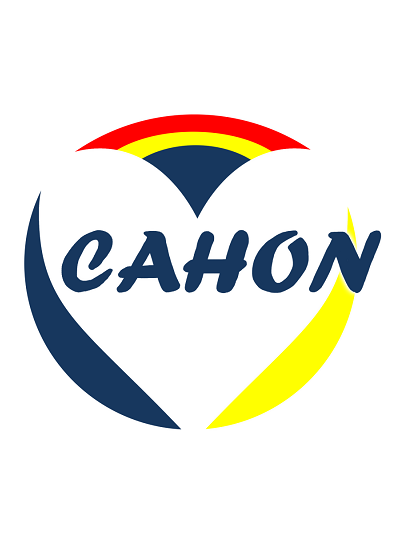CD19 CAR-T in relapsed t(8;21) AML: a single-center prospective phase II clinical trial.
IF 29.5
1区 医学
Q1 HEMATOLOGY
引用次数: 0
Abstract
Approximately 78.3% of patients with t(8;21) acute myeloid leukemia (AML) express CD19, making it a potential target for chimeric antigen receptor (CAR)-T cell therapy focused on CD19. This prospective phase II trial (NCT03896854) evaluated the safety and efficacy of CD19 CAR-T cell treatment in 10 relapsed CD19-positive t(8;21) AML patients. This study enrolled eight patients with hematologic and two with molecular relapsed AML. The median bone marrow blast percentage was 12.4% (0.1-50.2%), and the blasts exhibited a median CD19 positivity of 55.7% (22.6-97.1%). Genetic profiling revealed TP53 alterations (n = 1), KIT (n = 3) and FLT3-ITD (n = 1) mutations. After lymphodepletion with fludarabine and cyclophosphamide (FC), 5-20 × 106 cells per kilogram of CAR-T cells were administered. All patients experienced grade 3 or higher hematologic toxicities following tumor-reduction chemotherapy and the FC regimen, which were managed for a median of two weeks after CAR-T treatment. Non-hematological toxicities were mild and reversible. Eight patients presented with mild (grade 1-2) cytokine release syndrome (CRS), and one experienced grade 3 CRS. The immune effector cell-associated neurotoxicity syndrome was not observed. All patients achieved complete remission (CR) after CAR-T, with 60% achieving a molecularly MRD-negative CR. RUNX1::RUNX1T1 fusion transcript levels demonstrated a median 2.5-log reduction (range: 0.7-4.5 log; P = 0.002). At a median follow-up of 64.6 months (range: 11.2-88.8 months), the median overall survival and leukemia-free survival were 11.6 and 3.8 months, respectively. The 12-month cumulative incidence of relapse was 53.3%. These findings indicated that CD19 CAR-T was a safe and effective option for relapsed CD19-positive t(8;21) AML.CD19 CAR-T治疗复发性t(8;21) AML:一项单中心前瞻性II期临床试验
大约78.3%的t(8;21)急性髓系白血病(AML)患者表达CD19,使其成为靶向CD19的嵌合抗原受体(CAR)-T细胞治疗的潜在靶点。这项前瞻性II期试验(NCT03896854)评估了CD19 CAR-T细胞治疗10例复发性CD19阳性t(8;21) AML患者的安全性和有效性。这项研究招募了8名血液学AML患者和2名分子复发AML患者。骨髓母细胞百分比中位数为12.4% (0.1-50.2%),CD19阳性中位数为55.7%(22.6-97.1%)。遗传谱显示TP53改变(n = 1), KIT (n = 3)和FLT3-ITD (n = 1)突变。用氟达拉滨和环磷酰胺(FC)清除淋巴细胞后,每公斤CAR-T细胞给予5-20 × 106个细胞。在CAR-T治疗后中位时间为两周的肿瘤减量化疗和FC方案后,所有患者都经历了3级或更高的血液学毒性。非血液学毒性轻微且可逆。8例患者出现轻度(1-2级)细胞因子释放综合征(CRS), 1例出现3级CRS。未观察到免疫效应细胞相关的神经毒性综合征。所有患者在CAR-T后均达到完全缓解(CR),其中60%达到分子mrd阴性CR。RUNX1::RUNX1T1融合转录物水平显示中位数降低2.5个对数(范围:0.7-4.5个对数;p = 0.002)。中位随访时间为64.6个月(范围:11.2-88.8个月),中位总生存期和无白血病生存期分别为11.6个月和3.8个月。12个月累计复发率为53.3%。这些发现表明,CD19 CAR-T是治疗复发性CD19阳性t(8;21) AML的安全有效的选择。
本文章由计算机程序翻译,如有差异,请以英文原文为准。
求助全文
约1分钟内获得全文
求助全文
来源期刊
CiteScore
48.10
自引率
2.10%
发文量
169
审稿时长
6-12 weeks
期刊介绍:
The Journal of Hematology & Oncology, an open-access journal, publishes high-quality research covering all aspects of hematology and oncology, including reviews and research highlights on "hot topics" by leading experts.
Given the close relationship and rapid evolution of hematology and oncology, the journal aims to meet the demand for a dedicated platform for publishing discoveries from both fields. It serves as an international platform for sharing laboratory and clinical findings among laboratory scientists, physician scientists, hematologists, and oncologists in an open-access format. With a rapid turnaround time from submission to publication, the journal facilitates real-time sharing of knowledge and new successes.

 求助内容:
求助内容: 应助结果提醒方式:
应助结果提醒方式:


